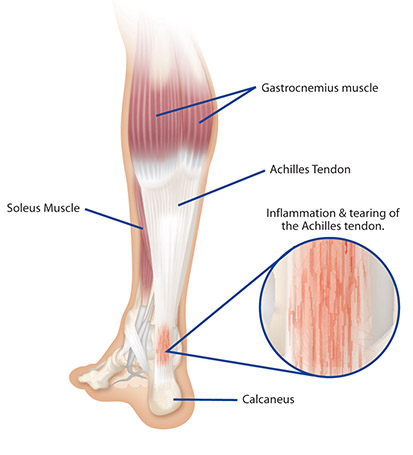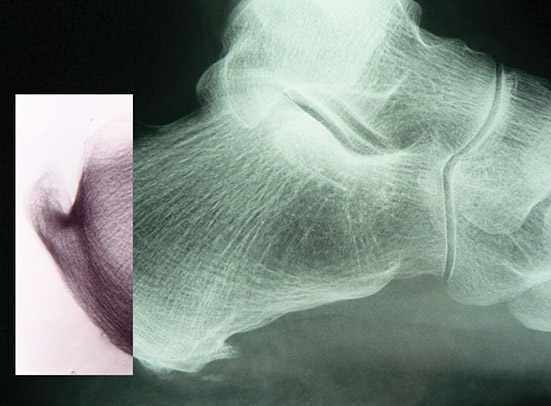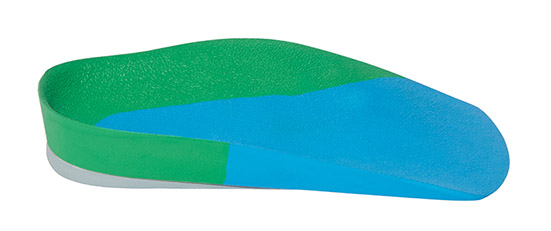Achilles tendonitis (also known as Tenosinovitis or Tendonopathy) is inflammation, irritation and swelling of the Achilles tendon at the attachment to the calcaneus. There are two types of Achilles tendonitis:
- 1. Non-insertional: caused predominately by excess pronation
- 2. Insertional: caused mainly by supination or a high forefoot valgus deformity
Biomechanical Aetiology
As shearing and tractional forces are placed on the Achilles tendon, inflammation can occur at the attachment to the calcaneus.
A major underlying cause of Achilles tendonitis is the result of aggravation caused by pronation or supination – or a combination of both. As the calcaneus inverts at heel lift, the gastrocnemius assists and as the foot accelerates into an excessively pronated (or supinated) position, the calcaneus is everted (or inverted) causing medial/lateral tendo-achilles traction. This results in transverse shearing of the tendon and sheath, leading to inflammation and pain being experienced.
Lateral Achilles pain is associated with a Pes Cavus (high arch) foot structure or a forefoot valgus >10° Unilateral Achilles pain can also be associated with a structural or functional leg length discrepancy.
The Achilles tendon fans out at its insertion to the calcaneus and is sandwiched between the superficial achilles bursa and the retro-calcaneal bursa. Sometimes an abnormal prominence of the postero-superior process of the calcaneus, known as Haglund’s deformity, may be present, causing irritation of the bursa or tendon. Often many patients with this condition are supinators which causes lateral lower limb pressure whilst making the foot less efficient in energy absorption, transferring this stress to the achilles tendon region. Superficial bursitis may cause tenderness posterior to the tendon. Retrocalcaneal bursitis usually exhibits tenderness while squeezing the area deep to the tendon.
Symptoms
The patient often experiences inflammation, pain and swelling of the Achilles tendon at the attachment to the calcaneus. Pain can be experienced either on the medial or lateral aspects of the Achilles. In extreme cases the Achilles tendon can rupture and detach from the calcaneus, or a compensatory bone spur may develop as the body’s natural compensation to prevent the tendon from rupturing.
Bilateral medial Achilles pain is often associated with pronation. Bilateral lateral Achilles pain is often associated with pronation and a high forefoot valgus. Whilst unilateral Achilles pain can be associated with a structural or functional leg length discrepancy.
Treatment
ICB Orthotics should be prescribed and fitted to assist in controlling pronation (or supination). To help alleviate the tension and inflammation (and resultant pain), a heel lift can be added to both the left and right orthotics. The heel lift should be removed from the orthotics within 2 weeks (or less if the pain and inflammation have subsided). If the heel lifts are worn for a longer period the Achilles tendon may start to shorten.
Additional Treatment
- R.I.C.E. (15 minutes, 3 times a day)
- Rest from running
- Achilles stretches – after inflammation is reduced, stand with legs straight on balls of your feet on a curb, step or rung of a ladder. Drop heels down and hold position for 20-25 seconds per leg in extended and flexed positions.
- Stretching of the calf muscles.
Head Office
Kirrawee NSW 2232
AUSTRALIA




